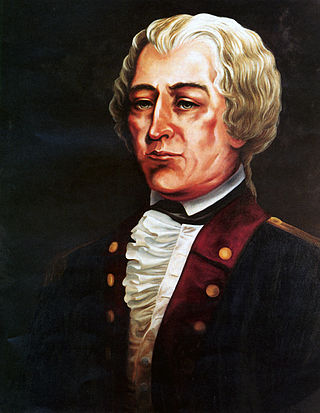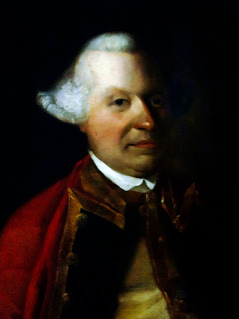
Major General Sir Henry Tombs VC KCB was a recipient of the Victoria Cross, the highest and most prestigious award for gallantry in the face of the enemy that can be awarded to British and Commonwealth forces.

Field Marshal Sir Hew Dalrymple Ross, was a British Army officer. After seeing active service during the Irish Rebellion of 1798, he fought as a troop commander in many of the battles of the Peninsular War and the Hundred Days. He went on to become the Artillery Commander, Northern District with delegated command over all the forces of the four northern counties before being promoted to Deputy Adjutant-General, Royal Artillery. Ross was the last person to hold the title of Lieutenant-General of the Ordnance, assuming responsibility for the artillery component sent to take part in the Crimean War under Lord Raglan. After the war he served as Master Gunner, St James's Park, a senior ceremonial post in the Royal Artillery.

John Doughty was an American military officer who briefly served as the senior officer of the United States Army in 1784. Holding the rank of major at the time, he bears the distinction of being the lowest ranked individual ever to serve as the senior most United States Army officer.

General Sir James Frederick Noel Birch was a British Royal Artillery officer during the Second Boer War and World War I and subsequently Master-General of the Ordnance. The Birch gun was named after him.

Olof Rudolf Cederström was a Swedish naval commander. Cederström enlisted in the Swedish admiralty in 1779 and as captain, he conducted a raid against Rogervik. He distinguished himself in 1790 at the naval Battle of Reval and the Battle of Viborg Bay. During the following years he led ships against privateers in the North Sea. He was sent in 1801 to fight alongside the United States Navy in the Mediterranean during the First Barbary War. In 1808 his ships were sent to blockade Gotland in order to repel a Russian invasion. His last military action was against Denmark and France in 1813, when he helped Swedish forces capture Vorpommern. In 1815, he was appointed a minister but returned to the navy in 1818. He finally resigned in 1828.

General Sir Robert William Gardiner was Master Gunner, St James's Park, the most senior ceremonial position in the Royal Artillery after the Sovereign.
Lieutenant General Sir Brian Charles Hannam Kimmins, was a British military commander who served as the General Officer Commanding Northern Ireland District.
General Sir John Smith was a British army general. In his early career as a Royal Artillery officer he fought in the American War of Independence, being twice captured and imprisoned by the Americans. In his later career Smith was involved in expanding the British Empire in the West Indies by protecting its trade routes, helped keep control of the islands of Gibraltar and Madeira and commanded various artillery regiments.
Lieutenant-General Sir William Brereton was a British Army officer of the nineteenth century who served as colonel-commandant of the 4th Brigade, Royal Horse Artillery in the 1860s.

Carlos Frederico Lecor was a Portuguese-born Brazilian general and politician. He was the first Baron of Laguna, in Portugal, and later ascended to Viscount of Laguna, in Brazil.

General Sir William Green, 1st Baronet, of Marass, Kent was an officer in the British Army.
Major-General James Murray Hadden was a British Army officer and surveyor-general of the ordnance.
Lieutenant-Colonel Joseph Brome was a British Royal Artillery officer who served during the Napoleonic Wars.
Lieutenant-General Samuel Rimington was a British Army officer who served in the Royal Artillery as a junior officer in the War of American Independence and later as the commander of the artillery in Scotland.
Colonel Sir William Robe was a British Army officer of the Royal Artillery who served in the Revolutionary and Napoleonic Wars. He was praised as an artillery commander in combat and an organiser of military operations, as well as starting the first regimental school for soldiers' children, and serving as the architect of Quebec's Anglican cathedral.
Lieutenant-General Sir Wiltshire Wilson was a general officer of the British Army who served in the Royal Artillery for some forty-five years, including several campaigns of the Revolutionary and Napoleonic Wars.
General Sir Edward Charles Whinyates, was a senior British Army artillery officer.
Moses Porter was a general in the United States Army during the War of 1812. His career lasted for over 40 years and he is one of the few officers who served in both the American Revolution and the War of 1812.
General Sir Alexander Lindsay KCB was an officer in both the British and East India Company armies. Commissioned into the British Army at the age of nine, he was placed on half-pay after the 104th Regiment of Foot was disbanded in 1795.








